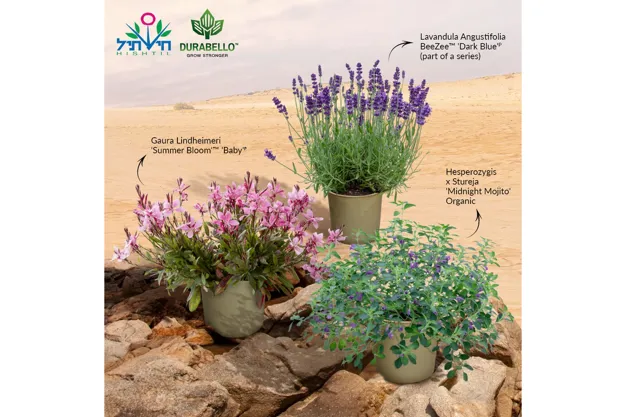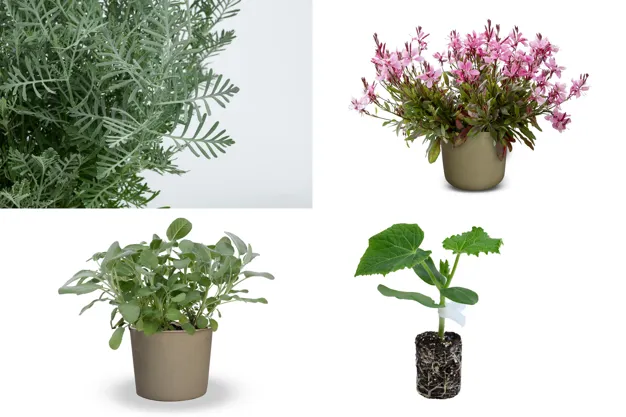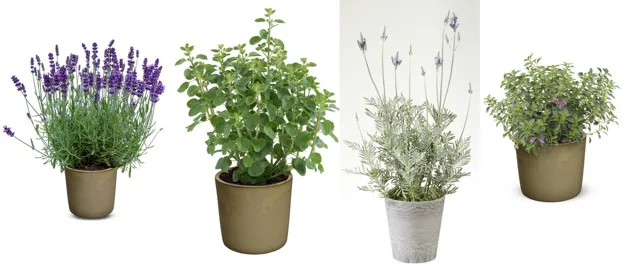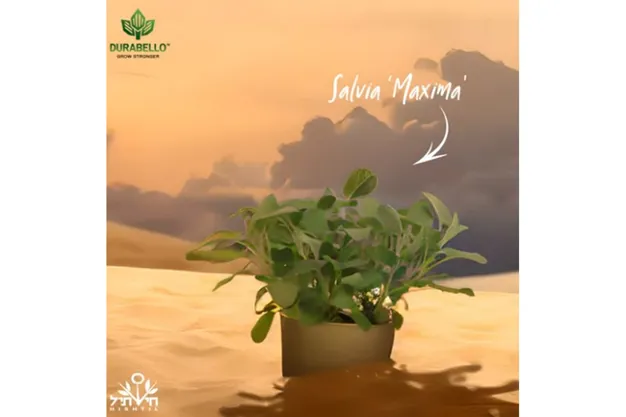Global warming is the cause of many negative phenomena, such as desertification, extreme climate change, and natural disasters. These impact significantly on agriculture – an industry that relies on stable weather patterns to reliably produce the food we eat – and also affect the edible and ornamental plants grown by consumers in their gardens. In this article, Haim Rosenblum of Hishtil will discuss global warming and how it affects plant growth, together with some of the solutions offered by Hishtil.

Some Durabello varieties. Click here for the enlarged image.
Global warming and challenges for the grower
The term "global warming" refers to the ongoing increases in the average temperature of the Earth and its atmosphere, Rosenblum explains. The scientific community largely attributes this warming to human activities that emit greenhouse gases. The effects of global warming include the shrinking of glaciers and reduced occurrence and persistence of snow; a surge in extreme weather events such as hurricanes and heatwaves; rising sea levels; and an increase in droughts and desertification. While this is an international phenomenon, its effects are felt differently around the world, both directly and indirectly."
"Desertification is a process that takes place when already arid or semi-arid areas become increasingly dry and barren", he continues. "This is mainly caused by the rise in the earth’s warming, which can lead to a decrease in rainfall and an increase in soil/air temperatures. Desertification is already occurring significantly in many areas around the world, creating difficulties for farmers growing crops and raising livestock."
Unpredictable temperature and weather patterns meanwhile make it difficult for farmers to plant and harvest crops on schedule. "In addition, acute weather conditions such as floods, droughts, and heatwaves can damage crops and reduce yield. These factors have a significant influence on food prices and availability, as well as directly on farmers’ livelihoods. Natural disasters are also becoming more prevalent due to global warming - hurricanes, typhoons, and other storms often destroy crops and harm the communities that rely on agriculture for a living, as well as damaging the economy in the broader sense."

Clockwise: Lavendula canariensis, Gaura Lindheimeri summer bloom Baby, Grafted cucumber, and Salvia officinalis 'Maxima'
Specific effects of climate change on agriculture and horticulture
Rosenblum mentions the following specific effects of s of climate change on agriculture and horticulture"
- Changes in temperature: These can affect growth rate, yield, and the quality of crops. Many plants have specific temperature ranges within which they will grow, and for some, even the slightest temperature rise can be problematic.
- Changes in precipitation: Rain patterns affect the timing of planting and harvesting, as well as the amount of water available for crops during the growing season, and the distribution of crops around the globe. Droughts, floods, and other extreme weather conditions also affect crop outcomes.
- Pests and diseases: Climate changes can also affect the distribution and incidence of pests and diseases that harm crops. Warmer temperatures can create favorable conditions for pests and diseases to thrive, leading to increased damage and reduced yields. Natural predators may not respond as rapidly as pests to these changes.
- Soil quality: Climate change can also have an influence on the soils in which crops are grown. Changes in temperature and precipitation may lead to soil erosion, nutrient depletion, and reduced soil fertility – all impacting crop yields.

Lavandula ang BeeZee - Dark Blue, Origanum Majorana, Lavandula canariensis 'Durabello'TM, and Hesperozygis-satureja Midnight-Mojito.
Durabello®: "Super plants"
In recognition of the difficulties which global warming creates, Hishtil has developed the “Durabello” series, which offers some solutions for growing in severe weather conditions. "Durabello plants are significantly more resistant to extremes of cold and heat, as well as to droughts and other environmental stressors – making them ideal for growers and gardeners dealing with climate change challenges."
"With vegetable crops, a solution may be found by switching to grafted plants. These are young plants grafted onto selected rootstocks which are more suited to life in stressful environments. Hishtil leads global plant-grafting technology by developing new rootstocks with improved and novel resistances for various vegetables such as tomato, cucumber, peppers and others."

Click here to see a short movie for the Durabello.
According to Rosenblum, there are many advantages to grafted vegetables: "In addition to durability in extreme weather conditions, these plants are also especially productive, with significant yields even under difficult conditions. Furthermore, grafted plants are also resistant to soil diseases, and require less water and fertilizers than traditional crops, thanks to enhanced root systems, which grow deeper into the soil to find water and nutrient sources that would not be readily accessible to seedling crops."
"In conclusion, global warming is leading to a significant impact on global food security and the livelihoods of people around the world. Adaptations such as improved soil health, the development of more drought-resistant crops and enhanced water management will help offset these issues. In addition to which, with solutions such as grafted vegetables and Hishtil’s “Durabello” series, farmers and home growers can take steps to meet these challenges, and continue growing crops and plants successfully."
For more informati on
on
Hishtil
Email: [email protected]
www.hishtil.com










